Despite being outlaws, pirates hold a deep reverence for democracy. They are also pioneers in implementing labor insurance.
The Truth About Pirates
- 1. An Attractive Job for Some
- 2. Acting by Democratic Rules
- 3. Compensation and Insurance Policies
- 4. Many Women Practicing Piracy
- 5. Many Honest People Volunteering to Become Pirates
- 6. Pirate Life Linked to Alcohol and Gambling
- 7. The Code of Conduct for Pirates
- 8. Pirates Welcome Same-Sex Marriage
- 9. The Truth About Pirate Earrings
- 10. Red Flag Pirates Are the Real Nightmare for Ships
- 11. Pirates’ Special Medicine
- 12. Roman Emperor Julius Caesar Was Once Captured by Pirates
- 13. Not Only Blind Pirates Wore Eye Patches
- 14. The Most Notorious Pirate in History with the “Burnt Beard”
- 15. Why Were There So Many Pirates in the Caribbean in the 18th Century?
1. An Attractive Job for Some
Those who live at sea always face a high risk of death. This reality was even more pronounced in an era when ships moved by sail and lacked electricity. So why do many still want to become pirates?
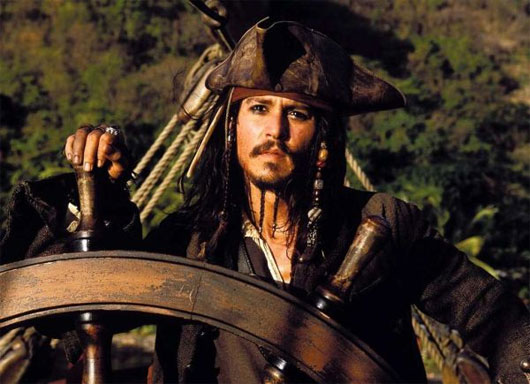
Illustrative Image: IMDB
Many people think of pirates as criminals on the high seas from the moment they enter the world. However, in reality, countless pirates had honest professions before turning to crime. They joined the world of piracy because it was a lucrative job. After each raid, the captain would evenly distribute the spoils among the crew members. Furthermore, the living conditions of pirates were often much better than those of sailors on merchant or naval ships.
Merchant sailors had the opportunity to become pirates when their ships were attacked. Traditionally, pirates would invite those they captured to join their ranks.
2. Acting by Democratic Rules
Contrary to popular belief, despite being against society, pirates hold a strong respect for democracy. In fact, we could say that pirates are enthusiastic admirers of democracy. To maintain a stable life at sea for months, pirates recognized that democracy was the best way to achieve that goal. The captain is typically elected by the majority of the crew. Electing a captain ensures that the leader of the ship has the support of most members on board, thereby reducing the risk of mutiny. While the captain may have absolute power in certain situations—such as during conflicts or dividing spoils—his authority is limited regarding the ship itself.
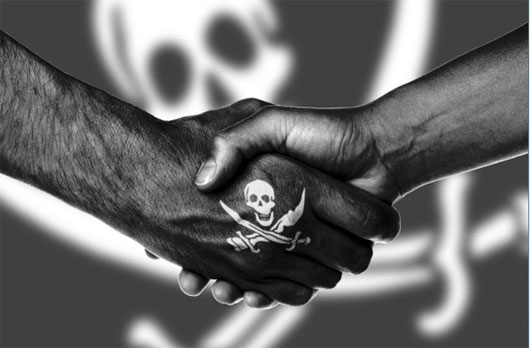
Pirate leadership elections are always open and democratic. (Illustrative Image: Listverse)
3. Compensation and Insurance Policies
Pirates had compensation policies for every member of their crew. The level of compensation depended on the severity of the injury. According to regulations, losing a leg was considered a more serious injury than losing two fingers, while losing the dominant arm was a more significant loss than losing the other arm. If you are knowledgeable about the history of insurance, you would know that pirates were among the first to implement labor insurance. They also provided “accessories” for disabled members—like eye patches for the blind, wooden legs, and hooks (to replace a lost hand). The crew always encouraged disabled members to continue contributing. Pirates lived by a collective system, so losing a limb or becoming disabled did not diminish an individual’s status or role within the organization.
4. Many Women Practicing Piracy
If you boarded a pirate ship, you might encounter quite a few women on board. To join the world of piracy, the first thing a woman needed to do was dress like a man. One of the most famous female pirates in history was Mary Lacy, a British citizen. She left her home in Portsmouth, England at the age of 19 and disguised herself as a man under the alias William Chandler to become a pirate. Mary even had a romantic relationship with a woman on the pirate ship. Later, Mary abandoned her life as a pirate due to her physical limitations.
5. Many Honest People Volunteering to Become Pirates
Volunteers made up a significant portion of pirate crews. This was a dangerous and unpredictable profession, leading to many pirates either dying or fleeing. Thus, pirate crews were always in need of new recruits. Like any other profession, pirates had to “tempt” new recruits with attractive prospects. They required their crew to dress lavishly so that others would perceive their lives as prosperous. If there weren’t enough volunteers, pirates would resort to force to conscript honest people into their ranks.
The number of people wanting to become pirates surged after 1713, when many sailors hunting merchant ships turned to piracy. As European nations clashed at sea, these sailors made quite a bit of money. In fact, in 1708, the British government even allowed them to keep everything they took from enemy merchant ships. However, just five years later, the Treaty of Utrecht brought peace to the oceans, leaving thousands of merchant hunters unemployed. Rather than returning to land, most joined pirate ships—where they could continue to use their old skills to survive.
6. Pirate Life Linked to Alcohol and Gambling
It is well-known that pirates often indulged in drinking. Alcohol became an important part of pirate culture, and alcoholism became a basic standard among them. For many pirates, the prospect of unlimited drinking was far more appealing than the riches they would acquire.
Alcohol served as a bonding agent among pirates. Therefore, if someone did not drink, others would look at him with suspicion. Pirates considered alcohol a remedy for many ailments—from food poisoning to feelings of inadequacy. Rum was a crucial commodity for Caribbean pirates. Whenever pirate ships attacked merchant vessels, they always plundered all the rum on board.
Gambling was another popular form of entertainment among pirates. Although some captains prohibited gambling while at sea, pirates always gambled whenever they were ashore. Alcohol and gambling led many pirates into dire circumstances.
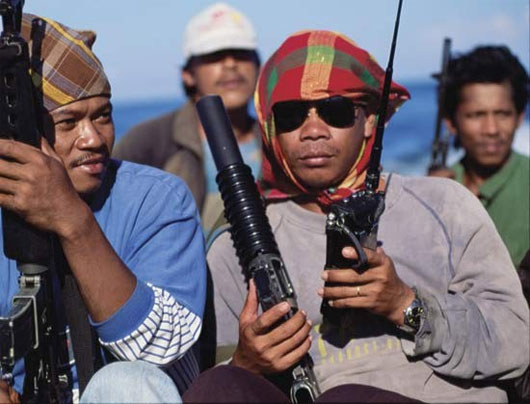
A group of Filipino pirates operating in the South China Sea. (Image: blogspot.com)
7. The Code of Conduct for Pirates
The film Pirates of the Caribbean begins with one of the main characters invoking the right to negotiate. This is a practical term. Although pirates did not use that specific phrase, they indeed had a code of conduct. The ethics of pirates emerged from a diverse and collective culture, influenced by a communal lifestyle at sea. Basic rules of conduct included: equitable distribution of wealth, decision-making through democratic voting, honesty to comrades, and loyalty to the captain.
Revenge was also a rule of conduct among pirates. According to this rule, pirates were obligated to retaliate against those who wronged them with violence.
8. Pirates Welcome Same-Sex Marriage
Pirates did not adhere to societal norms, allowing them to live freely. They openly embraced homosexuality and even established their form of same-sex marriage. For example, “matelotage” is the term pirates used for the marital relationship between two male pirates. Such “couples” would share property. If one died, the same-sex partner would inherit the assets.
Sometimes, pirates would engage in sexual relations with both men and women. When the French brought hundreds of prostitutes to Tortuga in the mid-17th century, they aimed to curb the same-sex marriages of male pirates there. However, the results were not as they had hoped. Pirates welcomed the prostitutes but continued to engage with their same-sex partners.
9. The Truth About Pirates’ Earrings
Real-life pirates often wore large earrings. However, the presence of this accessory went beyond mere fashion; it served a much more long-term purpose. With a life of constant danger and the possibility of facing death at any moment, pirates always tried to save up for a valuable pair of earrings, typically made of gold or precious metals. This was because, in the unfortunate event of their death, anyone who found their body could sell the earrings to pay for a burial or to send their remains back home. As a result, many pirates even engraved their names and hometowns on these pieces of jewelry.
10. The Red Flag Pirates Were Truly a Nightmare for Ships
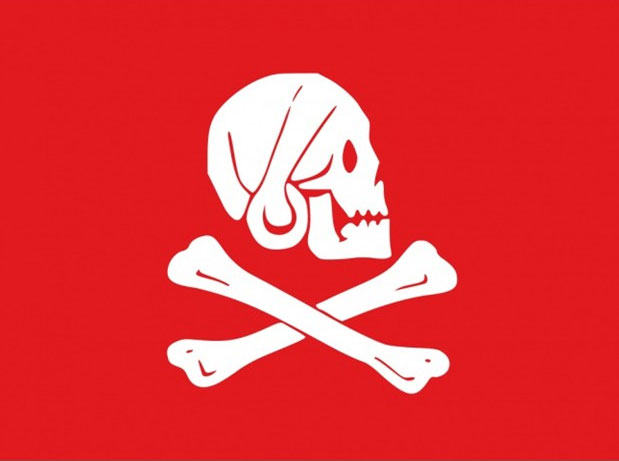
With the red flag, the pirates wanted to warn that they were bloodthirsty and would kill all crew members of any ship they attacked.
For merchant ships in earlier times, spotting a distant ship flying a black flag with a skull and crossbones would cause great concern. However, the outcome was often far worse if the flag still bore that symbol but the background changed from black to red. Historical accounts describe that black flag pirates typically attacked to plunder treasure. In contrast, the red flag signaled that these pirates were bloodthirsty and would kill all crew members of any ship they attacked.
11. The Special Medicine of Pirates
Due to their constant battles, pirates were very concerned about health and medical issues. They even created a special drink with healing properties. This drink was an improved version of Grog, a beverage made by English sailors, consisting of a mixture of rum and water. By adding sugar and lemon to Grog, pirates transformed it into a remedy to prevent scurvy, a disease caused by vitamin C deficiency commonly seen among sailors.
12. Roman Emperor Julius Caesar Was Once Captured by Pirates
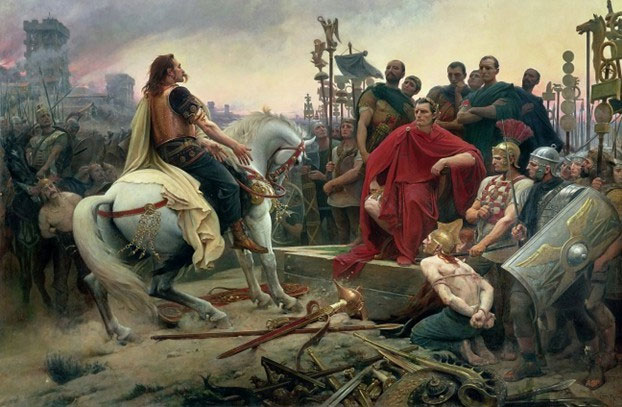
The famous Roman Emperor Julius Caesar was once captured by pirates.
The famous Roman Emperor Julius Caesar was once captured by pirates. Interestingly, these pirates were unaware of Caesar’s true identity and demanded a ransom of 20 talents (approximately $600,000). After this price was set, Julius Caesar laughed and claimed he was worth at least 50 talents. During his time as a hostage, he frequently recited poetry to the pirates. As soon as he was rescued, all the crew members of this pirate band were punished by being nailed to a cross.
13. Not Only Blind Pirates Wore Eye Patches
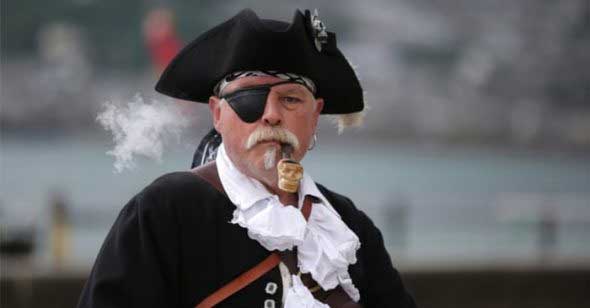
The eye patch was primarily used to enhance vision in the dark.
In reality, not only blind pirates wore eye patches, as their function was not to cover a missing eye as commonly believed. The truth is that eye patches were primarily used to enhance vision in the dark, which was essential for pirates. Specifically, by seeing with one eye, when pirates frequently shifted positions between the brightly lit deck and the often dark hold, their vision would adapt more flexibly.
14. The Most Notorious Pirate in History with a “Fiery Beard”
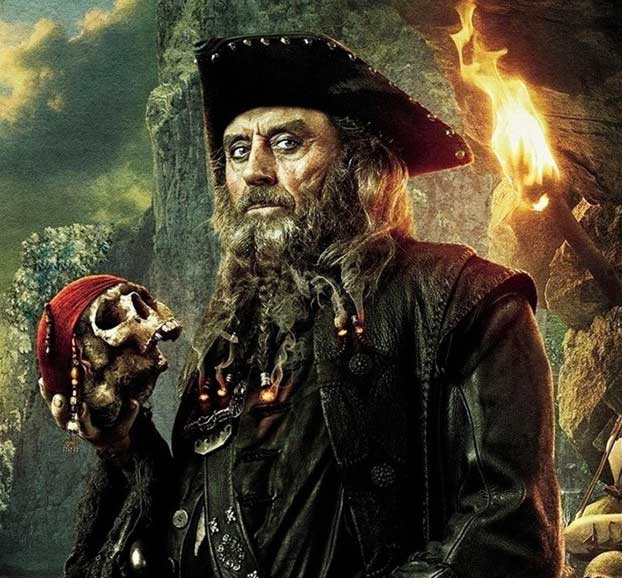
Whenever preparing for battle, Edward Teach would braid a hemp rope into his beard and then set it on fire.
Edward Teach was one of the most notorious and brutal pirates in history. Besides leading “spectacular” raids, this legend was also famous for his “fiery” beard. According to historical records, whenever preparing for battle, Edward Teach would braid a hemp rope into his beard and set it on fire. The smoke and flickering flames emanating from his beard terrified many opponents, while survivors recounted Edward Teach as a supernatural force.
15. Why Were There So Many Pirates in the Caribbean in the 18th Century?
The Caribbean was once the most pirate-infested area. Stories about pirates from this region have been adapted into many different films.
According to History, piracy has existed since humans set sail. The period from 1690 to 1730 (late 17th to early 18th century) is regarded as the “Golden Age” of piracy. According to the book “A History of the Medieval World,” the Caribbean (Central America) was famous for having many pirates in the 18th century, because it was a major thoroughfare for ships. Numerous acts of piracy occurred in the Caribbean during this time, with around 2,000 pirates operating in the region.
- Discovery of the skeleton believed to belong to the richest pirate in history
- Why do pirates and sailors often wear this item?
- A type of ice that doesn’t melt can keep cold for 13 hours and is reusable
- Dolphins “invent” a spinning diving technique to hunt
- Discovery of a pure gold button in a 2,000-year-old tomb





















































